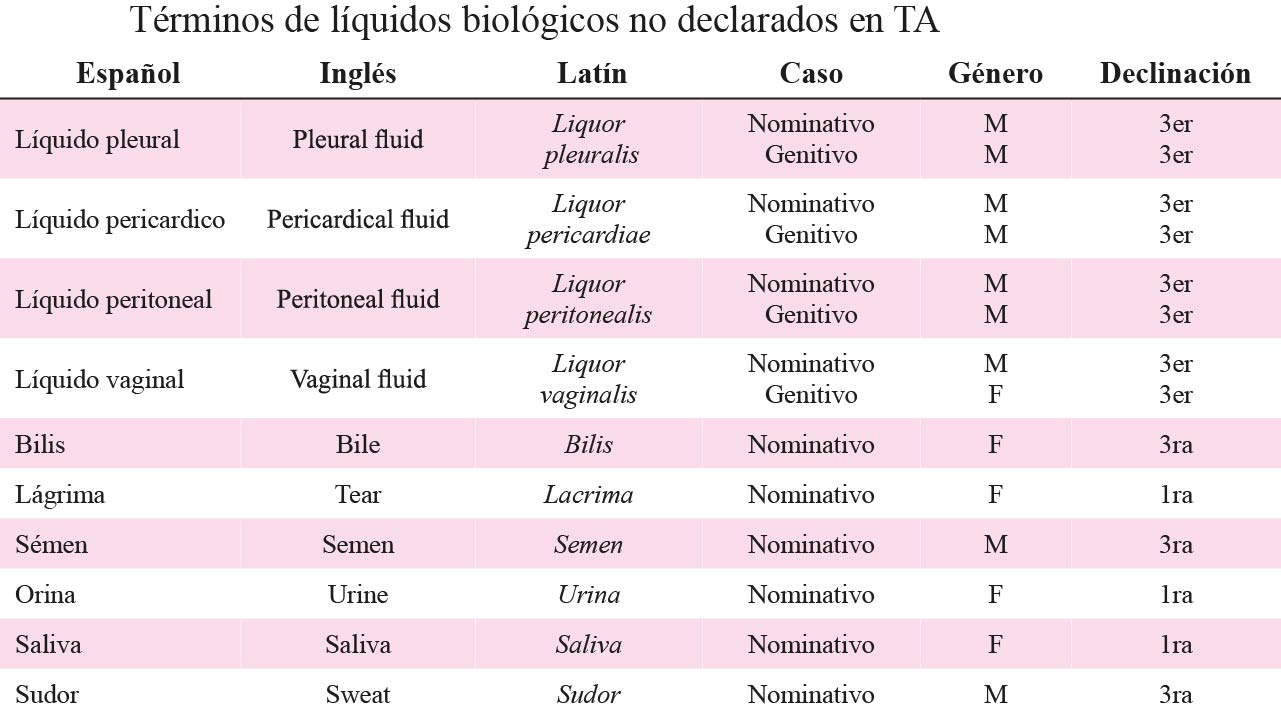Are the fluid terms should be included in Anatomical Terminology?
Abstract
Human anatomical denominations are the starting point for ordering all biomedical scientific language and scientific communication is subordinated to Anatomical Terminology (AT). For the incorporation of an anatomical term, resolutions from FIPAT and universal principles such as respect for the semantic identity of the structure and its components are used; however, in AT there are terms of biological liquids and the absence of others; liquids are the result of metabolic processes and participate in physiological phenomena. In the FIPAT 2nd edition publication, Anatomical Terminology, 2011, liquid terms are included without specifying the selection criteria. This document intends to establish a reconciliation of such inequity by incorporating basic biological liquid terms; it is proposed the need to incorporate in an annex such terms in view of their presence in real or virtual spaces without increasing the number of terms listed in the text.
Downloads
References
Sakai T. Historical evolution of anatomical terminology from ancient to modern. Anat Sci Int. 1 de junio de 2007;82(2):65-81.
Algieri RD. Reseña de la evolución histórica de los términos anatómicos. Rev.Arg.Anat.Onl. 2011; 2:106-11.
Losardo RJ, Cruz Gutiérrez R, Rodríguez Torres A, Prates JC, Prates NEVB de. Simposios Ibero-latinoamericanos de Terminología Morfológica (SILAT): Primeros Dos Años y Normativas Vigentes. Int J Morphol. diciembre de 2010;28(4):1323-6.
Glare PGW. Oxford Latin Dictionary. Oxford: Oxford University Press; 1968.
Thieme G. Terminología Anatómica. International Anatomical terminology. Stuggart. 2001.
Thieme G. Terminología Anatomica. International Anatomical. 2da. Ed. Stuggart. 2011.
Thieme G. Terminología Histológica : International Anatomical terminology. Stuggart. 2006.
Rosse C. Terminologia Anatomica: Considered from the perspective of next-generation knowledge sources. Clin Anat. 2001;14(2):120-33.
Feneis, H. & Dauber, W. Pocket Atlas of Human Anatomy. Based on the International Nomenclature. 4th ed. Stuttgart: Thieme; 2000.
Sakka L, Coll G, Chazal J. Anatomy and physiology of cerebrospinal fluid. Eur Ann Otorhinolaryngol Head Neck Dis. diciembre de 2011;128(6):309-16.
Suárez C, Gil-Carcedo LM, Algarra JM, autores. Tratado de otorrinolaringología y Cirugía de Cabeza y Cuello. 2da. ed. Tomo II. Madrid: Panamericana; 2007.
Pannu HK, Oliphant M. The subperitoneal space and peritoneal cavity: basic concepts. Abdom Imaging. octubre de 2015;40(7):2710-22.
Vogiatzidis K, Zarogiannis SG, Aidonidis I, Solenov EI, Molyvdas P-A, Gourgoulianis KI, et al. Physiology of pericardial fluid production and drainage. Front Physiol. 2015 6:62 doi: 10.3389/fphys.2015.00062
Charalampidis C, Youroukou A, Lazaridis G, Baka S, Karavasilis V, Kioumis I, et al. Physiology of the pleural space. J Thorac Dis. 2015; 7:5.
Hermine C. L.M.D. Radiology of Liver Circulation Series in Radiology. Kindle. Vol. 11. 1985. 1-3 p.
Strasinger , Di Lorenso. Análisis de orina y de líquidos corporales. 5a ed. China: Panamericana; 2010.

Copyright (c) 2020 Rafael Coello Cuntó, Rafael Coello Salguero, Gary Muñoz Sanchez, Rita Vega Cobos, José Véliz Ortega, José Ignacio Macías Alcivar , Marcos Jiménez Asang , Yodrany Jiménez Asang

This work is licensed under a Creative Commons Attribution 4.0 International License.
The authors retain the copyright, but assign to the Journal the rights of publication, edition, reproduction, distribution, exhibition and communication at the national and international level in the different databases, repositories and portals.
















